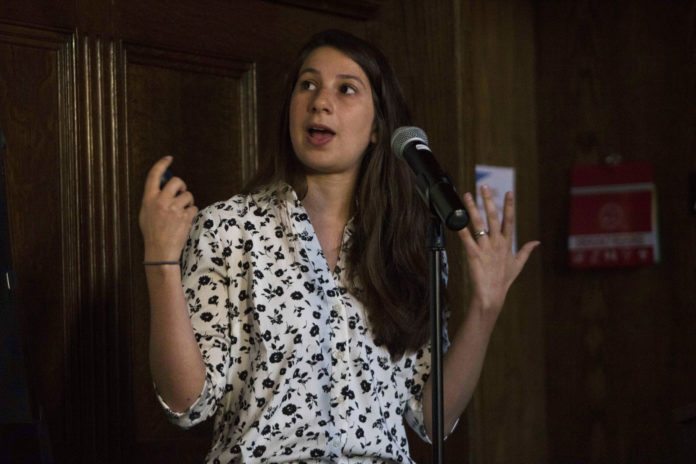
Occidental’s computer science department hosted Dr. Katie Bouman Oct. 1 in Choi Auditorium to talk about her work imaging black holes. The talk detailed the methods used to generate the first picture of a black hole with the Event Horizon Telescope.
Bouman began the presentation by explaining that black holes are believed to leave a shadow of their shape on a background of gas in space. If scientists were able to get a picture of this black hole shadow, they would be able to answer many unsolved questions about black holes. However, a telescope would have to be almost the size of our planet to capture this image, according to Bouman.
Dr. Kathryn Leonard, computer science department chair, organized the event and reached out to Bouman.
“I was organizing other events this past summer in computer vision and Katie was one of our invited speakers, and I met her through that organization process,” Leonard said. “Then I found out she was coming to Cal Tech in the fall, and thought, ‘That’s really close by, we can get you to come to Oxy.’”
Bouman discussed the methods she and her team used to develop the photo. According to Bouman, multiple telescopes across the globe were used to take the images. However, because of the different atmospheric qualities around each telescope, Bouman said each image needed to be reconstructed. According to Bouman, she and her team — who worked very well together — were tasked with reconstructing these images.
“It’s a huge group, global effort,” Bouman said. “There’s an amazing group of students and postdocs who really work together on a daily basis from all different aspects of the problem.”
The final image was a collection of data taken from the telescopes over four different days in order to ensure accuracy. Toward the end of the talk, Bouman showed a picture of the black hole and detailed the rollercoaster of emotions she experienced upon seeing the image.
“The first photo I saw, when we first got the data, I was like jumping between like, being incredibly excited, ‘Oh my God am I actually looking at a black hole right now?’ and then being really mad at my friend, because I thought that he might have faked the data,” Bouman said. “It just seemed too good to be true.”
Leonard said the progress scientists have made with black holes, from speculating about their existence to having a picture of one, is amazing.
Bouman ended the talk by reassuring eager students that the research has not stopped. According to Bouman, she will be continuing the work at Cal Tech with a grant she was awarded to potentially collect more images of black holes.
Chelsea Fell (sophomore), a computer science major, said she was excited the research will be continuing.
“They’re adding more satellites to get better imagery and more data on the black hole,” Fell said. “I think that’s so insane that they keep going with it even after they just got an image.”
When reflecting on her path and her interest in science, technology, engineering and mathematics (STEM) and computer science, Bouman had advice for those afraid to try new subjects.
“Don’t be scared to try new things,” Bouman said. “I didn’t know anything about black holes. And it was kind of a little bit scary to go into a field that you don’t really understand, but you can do your work with the right people, make and find good connections and be open to new ideas.”
Leonard said STEM fields can benefit from individuals of varying backgrounds.
“[STEM] absolutely needs people from every walk of life, every gender, every race, every religion,” Leonard said. “We need people who are thinking about these hard problems in many different ways so that we can be sure we aren’t missing out on an important frame of reference for understanding a problem,” Leonard said.
![]()


































